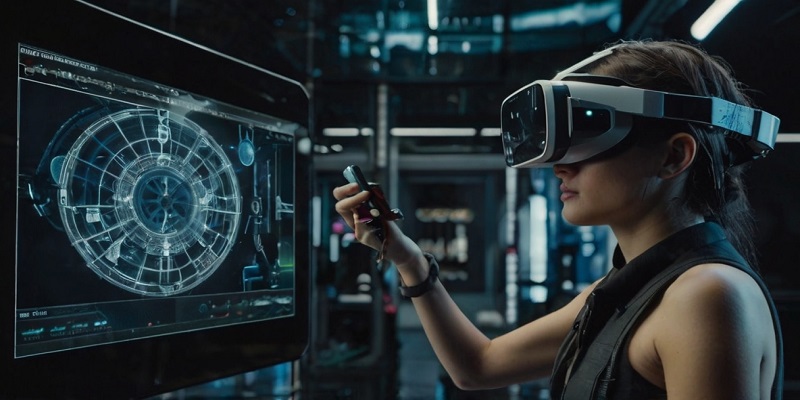From Gaming to Real World Applications: The Rise of Augmented Reality (AR)

Augmented Reality (AR) has emerged as one of the most innovative and transformative technologies of the 21st century. Originally popularized by the gaming industry, AR is now making significant inroads into various real-world applications. This article explores the journey of AR from its gaming roots to its current and potential uses across multiple industries, highlighting its impact, benefits, and future prospects.
The Evolution of Augmented Reality
Early Beginnings in Gaming
AR technology began its journey in the realm of gaming. Early adopters saw the potential to create immersive and interactive gaming experiences. The technology superimposes digital content onto the real world, enhancing the gaming environment. A notable example is Pokémon GO, which took the world by storm in 2016. Players could see and capture virtual creatures overlaid on real-world settings through their smartphones.
Technological Advancements
The rise of AR in gaming was facilitated by advancements in hardware and software. Improvements in camera technology, sensors, and processing power have allowed for more sophisticated and seamless AR experiences. Additionally, the development of AR development kits (ARKits) by major tech companies has made it easier for developers to create AR applications.
Transition to Real-World Applications
Education and Training
One of the most promising areas for AR is education and training. AR can provide interactive and engaging learning experiences, making complex subjects easier to understand. For instance, medical students can use AR to visualize and interact with 3D models of human anatomy, enhancing their understanding and retention of information. Similarly, AR can be used in vocational training to simulate real-life scenarios, providing hands-on experience without the associated risks.
Healthcare
In healthcare, AR is revolutionizing diagnostics, treatment, and patient care. Surgeons can use AR to overlay critical information, such as patient vitals and 3D models of organs, onto their field of view during operations. This enhances precision and reduces the risk of errors. Moreover, AR applications can assist in patient education, helping them to better understand their conditions and treatments through interactive visuals.
Retail and E-commerce
The retail and e-commerce sectors are leveraging AR to enhance the shopping experience. Virtual try-ons for clothing, accessories, and makeup allow customers to see how products will look on them before making a purchase. This not only improves customer satisfaction but also reduces return rates. Additionally, AR-enabled store navigation helps shoppers find products more efficiently, enhancing their overall shopping experience.
Real Estate and Interior Design
AR is transforming the real estate and interior design industries by allowing clients to visualize properties and designs in a more immersive way. Prospective buyers can take virtual tours of properties, while interior designers can use AR to show clients how different design elements will look in their space. This technology enables better decision-making and streamlines the design process.
Tourism and Travel
The tourism and travel industry is also benefiting from AR. Travelers can use AR apps to enhance their sightseeing experiences, with information and historical facts overlaid on their view of landmarks and attractions. AR can also be used to create interactive guides, making it easier for tourists to navigate unfamiliar places and learn about their surroundings.
Manufacturing and Maintenance
In manufacturing and maintenance, AR is being used to improve efficiency and accuracy. Technicians can use AR glasses to receive real-time instructions and visual aids while performing complex tasks, reducing errors and downtime. This technology can also be used for remote assistance, allowing experts to guide on-site workers through repairs and maintenance procedures from a distance.
The Benefits of Augmented Reality
Enhanced User Experience
One of the primary benefits of AR is its ability to enhance user experience. By overlaying digital information onto the real world, AR creates more engaging and interactive experiences. This can lead to increased user satisfaction and loyalty, particularly in customer-facing industries like retail and tourism.
Improved Learning and Training Outcomes
AR’s interactive and immersive nature makes it an effective tool for education and training. Learners can engage with content in a more meaningful way, which can lead to better understanding and retention of information. This is particularly valuable in fields that require hands-on practice, such as medicine and technical trades.
Increased Efficiency and Accuracy
In industries like manufacturing and maintenance, AR can significantly improve efficiency and accuracy. By providing real-time information and guidance, AR reduces the likelihood of errors and increases the speed at which tasks can be completed. This can lead to cost savings and improved productivity.
Enhanced Customer Engagement
AR provides unique opportunities for customer engagement. In retail, AR apps allow customers to interact with products in new and exciting ways, such as virtual try-ons and product visualizations. This can lead to higher customer satisfaction and increased sales. Similarly, in tourism, AR-enhanced guides and information overlays can create more memorable and informative experiences for travelers.
Challenges and Future Prospects
Technical Challenges
Despite its many benefits, AR technology still faces several technical challenges. Developing AR applications requires significant expertise and resources, and there are limitations in terms of hardware capabilities and processing power. Additionally, ensuring a seamless and immersive AR experience can be difficult, particularly in outdoor environments where lighting and other factors can impact performance.
Privacy and Security Concerns
As with any technology that collects and processes user data, AR raises privacy and security concerns. AR applications often require access to camera and location data, which can be sensitive. Ensuring that this data is protected and used responsibly is critical to maintaining user trust and compliance with regulations.
The Future of AR
The future of AR looks promising, with continued advancements in technology and expanding applications across various industries. Emerging technologies, such as 5G and artificial intelligence, are expected to further enhance the capabilities and potential of AR. As AR becomes more integrated into our daily lives, it is likely to drive significant changes in how we interact with the world around us.
Conclusion
From its beginnings in gaming to its current and potential applications in various real-world industries, Augmented Reality has proven to be a transformative technology. Its ability to create immersive and interactive experiences has made it valuable in education, healthcare, retail, real estate, tourism, and manufacturing. Despite facing technical and privacy challenges, the future of AR looks bright, with ongoing advancements expected to unlock even more possibilities. As AR continues to evolve, it will undoubtedly play an increasingly important role in shaping the future of technology and society.
By leveraging AR, industries can improve user experiences, enhance learning and training outcomes, increase efficiency and accuracy, and create new opportunities for customer engagement. As we move forward, it will be exciting to see how AR continues to develop and impact our world in innovative and meaningful ways.





